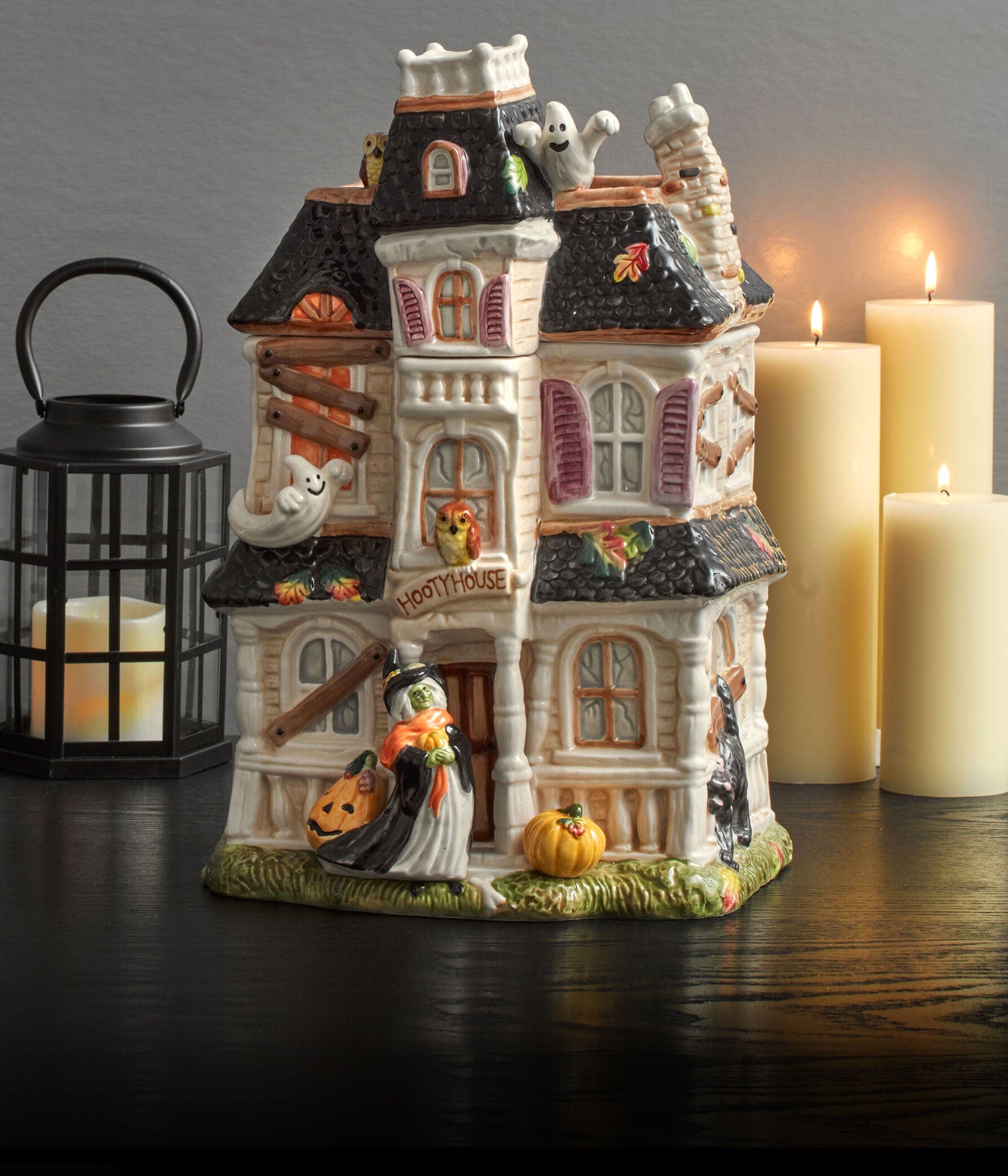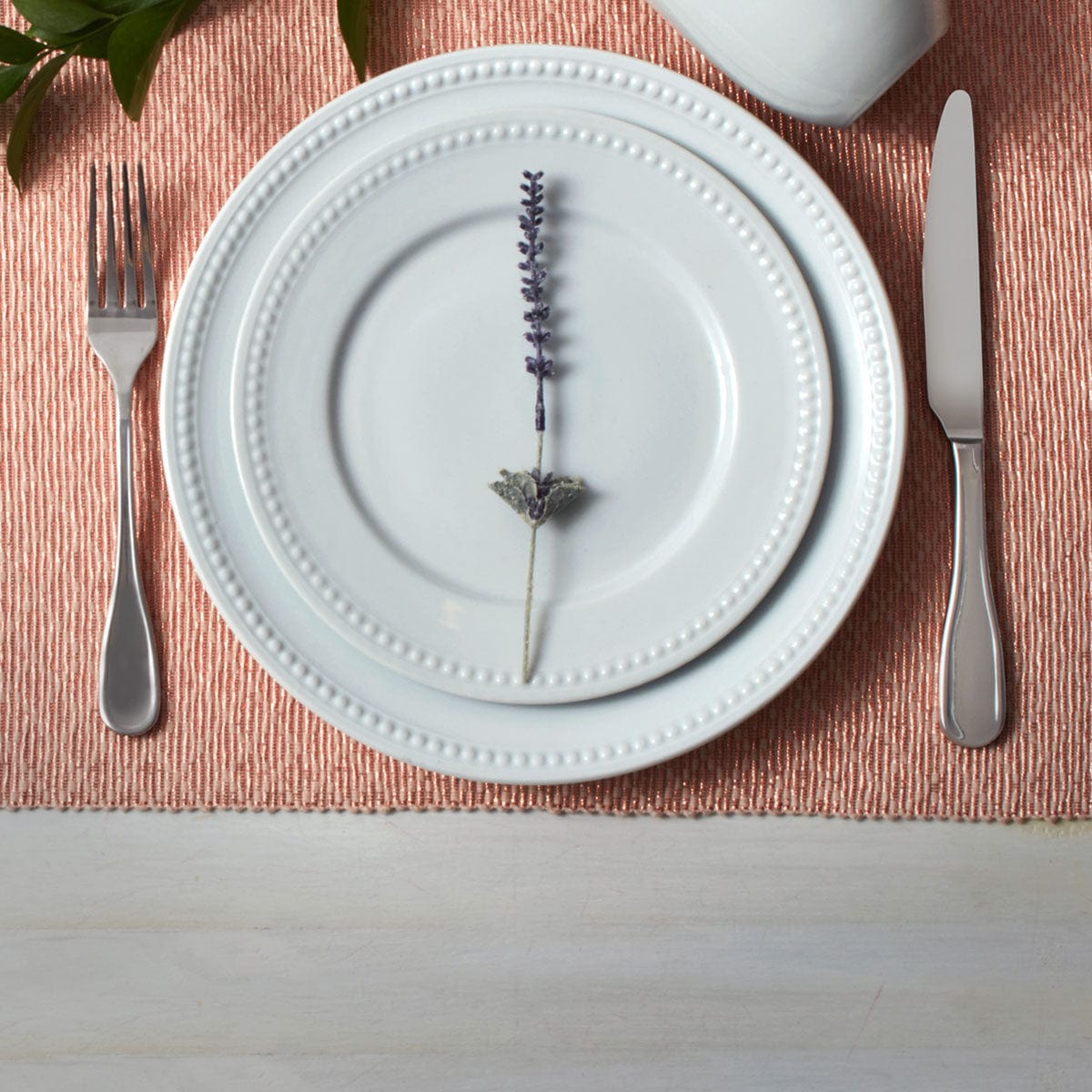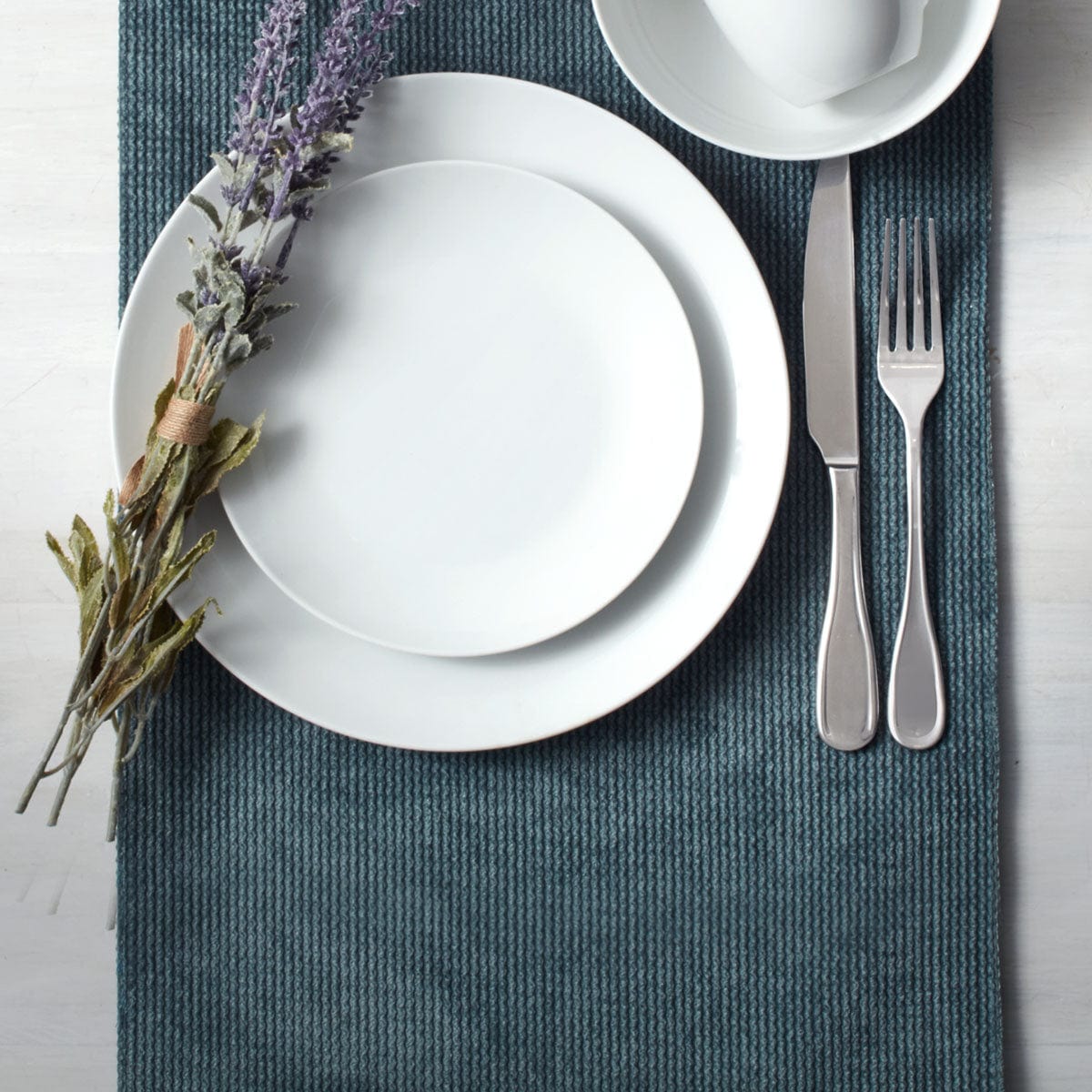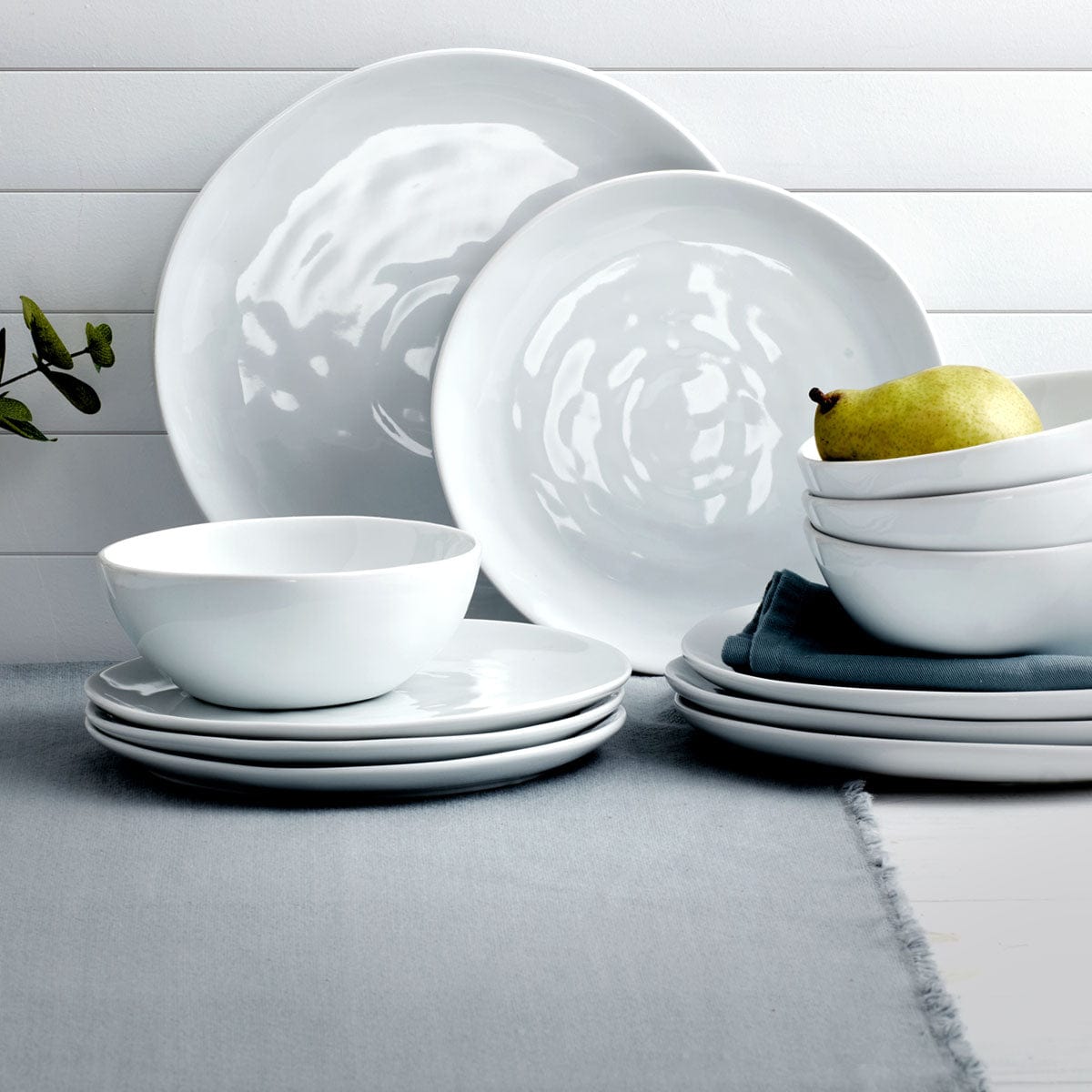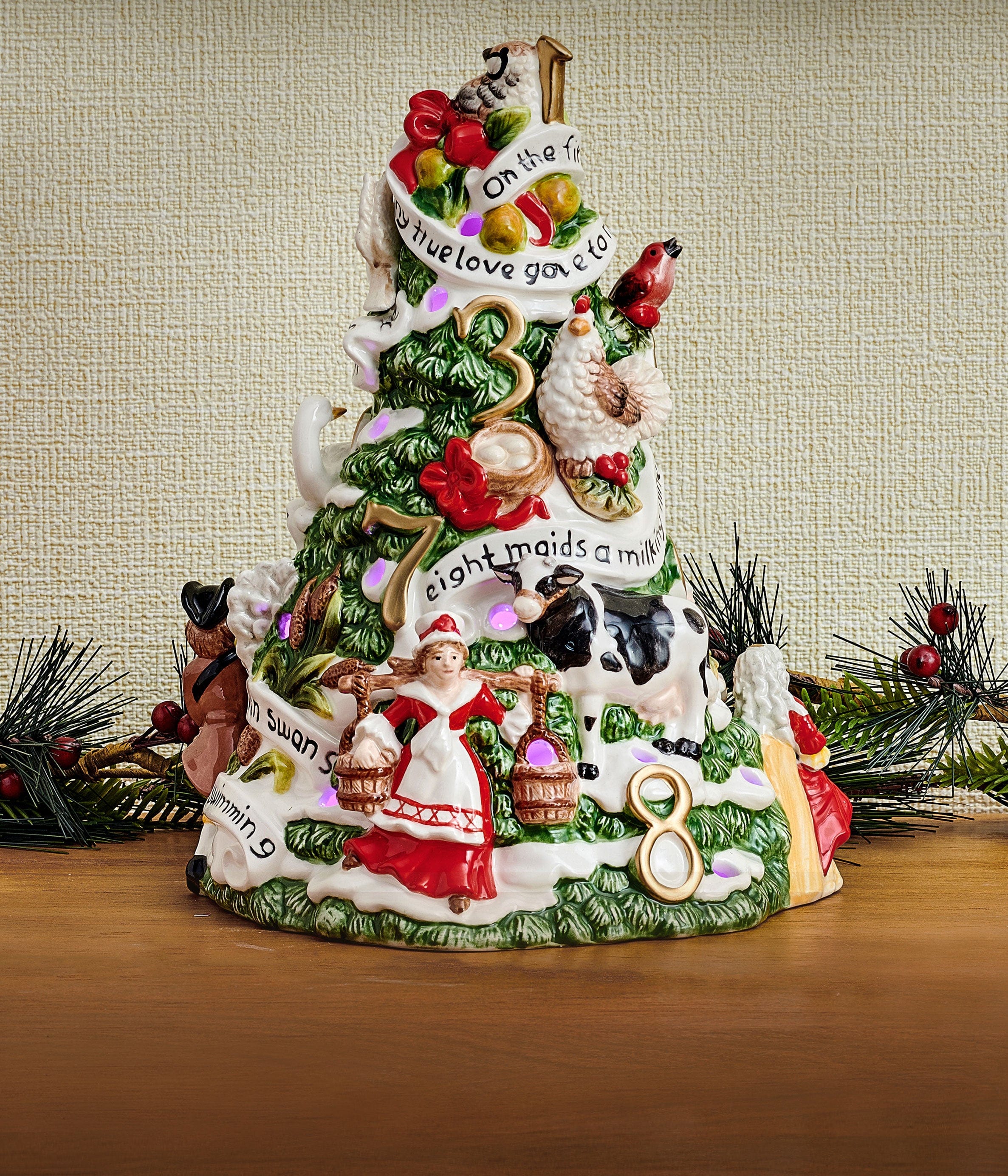Product Use and Care
Product Guide: Types, Use & Care
Enjoy your Dinnerware. Make it a part of your everyday life. Don’t “save” it for special occasions. There are several types of material such as bone china, porcelain, stoneware and earthenware. Our dinnerware and salad plates are designed for today’s creative consumers; encouraging them to mix and match our product to express their own lifestyles. Good care should provide you with years of lasting enjoyment.
Product / Material Types
What is the difference between bone china, porcelain, stoneware and earthenware?
Bone China
- Is made from a mixture of bone ash and highly refined clay. It is pure white or cream, translucent and non-porous. It is the most durable of the ceramic types.
- Our bone china contains 42% bone ash
- Bone China is Dishwasher Safe.
Porcelain
- Is made from highly refined white clay. It is often translucent and non-porous. Porcelain tends to be thinner and lighter than stoneware with a more delicate appearance.
- Porcelain is Dishwasher & Microwave Safe.
Stoneware
- A hard, durable ceramic made of light colored clay. It is opaque and porous. Stoneware dinnerware tends to be thicker and heavier than porcelain or china. It can be glazed in a wide variety of colors and finishes (matte, satin, and shiny) for diverse designs.
- This type of dishware will break with sudden temperature changes. Never attempt to clean hot stoneware in cool water, and never pick up hot stoneware with a wet cloth. It cannot be placed over a direct source of heat or flame, and it should not be used with microwave browning trays or beneath the broiler.
- Stoneware is Dishwasher & Microwave Safe.
Earthenware
- Made from a mixture of clay and sand. Earthenware is an ideal medium for hand-painted and embossed designs. The lower firing temperatures allow for more intense color than would be possible with other types of ceramics. Ironstone is a heavier, stronger type of earthenware.
General Care
Hand washing is the best way to fully insure the longevity of your dinnerware’s beauty. It is especially recommended for the frequent use of dinnerware trimmed in gold or platinum. Do not overload the sink; only wash a few pieces at a time. Never place dinnerware in contact with a direct flame or subject it to extreme temperature changes. Harsh heavy-duty detergents, scouring powders, and steel wool pads are abrasive and should never be used on dinnerware. Our Dinnerware is dishwasher-safe. When washing in the dishwasher, use a mild, non-citrus liquid or powder detergent. Load dishes securely on racks so that the pieces do not touch, and so they cannot be dislodged by water action. Ensure that the dishwasher is in good working condition and has no exposed metal racks. Also ensure that metal objects (pots, pans, utensils) do not come in contact with the dinnerware. Use a mild wash cycle, and let pieces cool before removing.
Dinnerware with Gold-Banding or Other Metallic Decoration The best preventative maintenance for tarnish is use. The more frequently you use your dinnerware, the less chance it will tarnish. Drying by hand immediately after washing will also help to prevent tarnish. Never place gold-banded or other metallic decoration in a microwave, unless specified on the backstamp.
Tarnish Tarnish (discoloration) of banding can be caused in many ways: hard water with a high iron and/or manganese content, rust in interior plumbing or dishwasher parts, or contact with chemicals or chemical fumes in the environment.
Metal Marks Occasionally, dark streaks may be found on the surface of your china from contact with kitchen utensils, aluminum foil trays or other metal objects. Apply a small amount of a gentle, non-abrasive cleanser, such as Bon Ami, using a soft, wet cloth or sponge.
Stains from Coffee, Tea, etc. Stains can result from allowing coffee, tea or certain foods to stand on china. If possible, rinse promptly after use. Should stains develop, we recommend the following:
- Apply a non-abrasive cleanser with a sponge or cloth, rubbing gently.
- Or, make a solution of 1 part chlorine bleach to 8 parts water. Allow stained pieces to soak in the solution for approximately one hour, then wash, rinse, and dry
Hand-Painted Giftware and Serving Pieces Many Fitz and Floyd giftware products are hand-painted and designed to be functional serving items as well as beautiful display pieces. Proper care will provide years of beauty and enjoyment. To ensure the proper care of your giftware and serving pieces, we recommend you follow these easy care instructions:
- Food Service pieces are safe for serving your favorite foods. However, they are not designed for preparing or storing food and should not be used in the oven, microwave, refrigerator or freezer.
- Hand-painted serving pieces should not be washed in a dishwasher, they should be hand washed using a mild detergent.
- Use of rubber or wooden utensils is recommended.
- Do not allow your serving pieces to soak in water.
- To remove gray metal marks that may have occurred from contact with pots or flatware, use a mild, creamy abrasive.
- Never use steel wool or strong abrasives.
Decorative Accessories
- Clean with mild soap and tepid water
- Pat gently dry with a soft cloth
- Do not scrub or use abrasives
- Dust Often
How To Repair Products
Although we do not offer repair services, here are a few suggestions for making repairs to your treasured pieces. Please note that caution should be observed and you should use your own judgment as Fitz and Floyd Enterprises (FFE) is not responsible for additional damage.
- To repair clean breaks (such as attachments that have come loose) we recommend a product called E6000. Just a small amount should be sufficient. We have also had success using regular Super Glue. Use a small amount and follow the instructions on the adhesive for removing excess. Note – Our product should be stored in a climate-controlled area whenever possible, as extreme temperatures may affect the adhesives used for attachments.
- For chips and paint issues, we recommend using acrylic or model paints and finding a match as close as possible to our original color. Unfortunately, we do not offer touch up paint. Other collectors have told us they use markers and even crayons to blend and touch up paint chips.
- We recommend contacting a local ceramics shop for more extensive repairs. You should be able to find listings in the phone book or by searching online using terms such as Ceramics + city and state or ceramic studios + city and state. You may also want to check with a local craft/hobby store, as they may be of assistance.
- For those pieces that are more valued, there are companies that specialize in collectible ceramic repair – you should be able to find listings online for these, as well, by using terms such as collectible ceramic repair services, etc.
